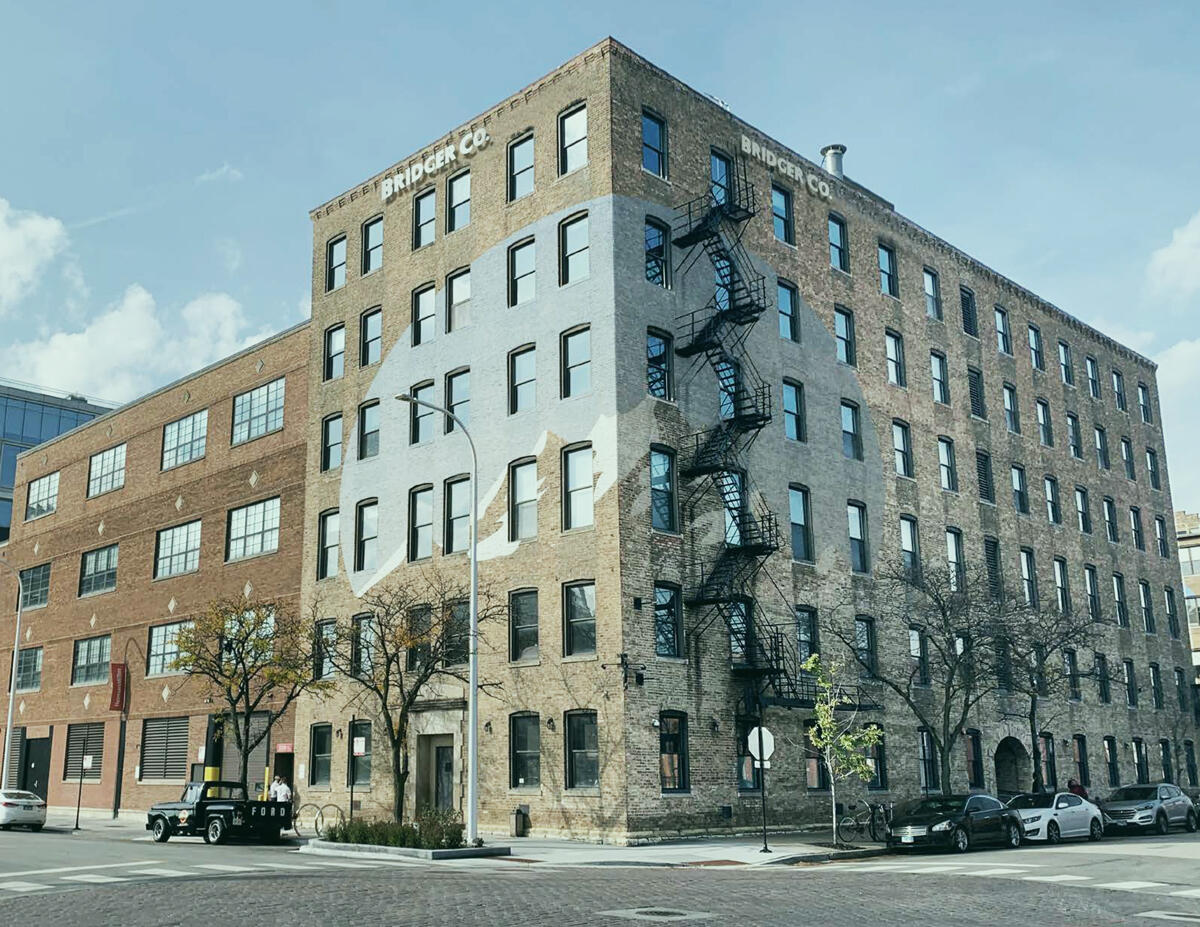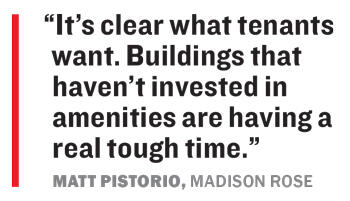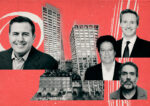Trending
Can Fulton Market lead Chicago’s office recovery?
Flight to quality leaves owners of older buildings with two options: upgrade or convert

Like in most major cities, Chicago’s office market faces an uphill climb against high vacancy rates and a string of loan defaults. Some buildings are struggling more than others.
At an office complex on the corner of West Fulton Street and North Elizabeth Street in Fulton Market, which includes a century-old former fire station renovated to include a private outdoor courtyard and fitness center, a series of recent leases have helped occupancy recover to 90 percent. Two miles east, at 205 West Wacker Drive, where amenities are more limited, occupancy stands at just 75 percent.
The difference demonstrates how some buildings have bounced back quicker than others as tenants start bringing employees back to their offices, said Matt Pistorio, founder of Madison Rose, who oversees leasing at both buildings.
“It’s clear what tenants want,” said Pistorio. “There are still tenants transacting in the Loop, in older buildings that have been rehabbed and invested significantly in amenities. Buildings that haven’t invested in common areas and amenities are having a real tough time.”
The city’s office market is bifurcated — buildings with updated amenities in popular locations, especially Fulton Market, are finding new tenants, while older buildings are struggling to sign new leases.
Those contrasts will be magnified as pandemic restrictions ease and more employees return to the office. Tenants — from tech firms to financial services — are reevaluating their needs after discovering that many jobs can just as easily be done from home. Because office leases tend to run for about 10 years, it’s a shift that has yet to be fully reflected in occupancy rates. Winners and losers will gradually emerge as leases expire and the real level of demand becomes clear.
“It’s a slow burn when it comes to the office market,” said Laura Dietzel, real estate senior analyst at RSM. While pricing is reset annually for the multifamily market and daily for the hospitality industry, distress in office buildings tends to be more gradual. “Revenue is tied to long-term leases that all don’t expire or terminate during the same time.’’
About 34 percent of workers were back in their offices in Chicago by mid-November, according to Kastle Systems, which tracks card-swipe entries in office buildings. That’s roughly the same as New York and Los Angeles, but well behind Austin and Houston, at more than 51 percent each.
The vacancy rates in the central business district — meaning offices that aren’t leased — increased to 17.7 percent in the third quarter, a record. Net absorption — the amount of space leased minus space vacated — was negative 1.2 million square feet in the third quarter. Since the onset of the pandemic, 9.1 million square feet has been vacated in the area, according to Colliers.
About 6.2 percent of Chicago office loans packaged in commercial mortgage-backed securities had gone into special servicing as of Oct. 31, with unpaid balances totaling $375.9 million. That’s 66 percent higher than the same period two years ago, according to Morningstar.
 The biggest downtown office default came at the 915,000-square-foot Civic Opera House at 20 North Wacker Drive, as New York investment firm 601W was hit with a $195 million foreclosure suit after failing to make monthly loan payments since May. Other properties which owners have handed over to their lenders since last year include the 487,000-square-foot 401 South State Street and the 226,000-square-foot 65 East Wacker Place.
The biggest downtown office default came at the 915,000-square-foot Civic Opera House at 20 North Wacker Drive, as New York investment firm 601W was hit with a $195 million foreclosure suit after failing to make monthly loan payments since May. Other properties which owners have handed over to their lenders since last year include the 487,000-square-foot 401 South State Street and the 226,000-square-foot 65 East Wacker Place.
Fulton Market
Developers and landlords see Fulton Market as the city’s most promising office district. While the vacancy rate for office buildings there is 28 percent, it’s primarily because that’s where the biggest share of development is happening.
In the first three quarters of 2021, 573,536 square feet of office space was leased in Fulton Market, a 167 percent increase from the same period in 2019.
Developers and tenants in Fulton Market are thinking small, a turnabout from pre-Covid times, when companies increasingly opted for broad, open floor plans.
Sterling Bay revised plans for its Fulton Market office building at 360 North Green Street to make it narrower, but also nine floors taller. The company said the smaller floor plans are meant to entice professional-services tenants and law firms that tend to avoid extra-large offices. About 75 percent of all new, renewed and expanded leases in the central business district were signed by firms seeking less than 10,0000 square feet, according to Cushman & Wakefield.
The hybrid approach to in-office work is likely here to stay. Only a slim majority of office managers expect most employees to be back in the office at least three days per week, according to a recent survey by commercial real estate advisory Blue Skyre IBE.
Life sciences to the rescue
That reality makes tenants such as life sciences companies, whose employees usually can’t work from home, among the most sought after.
Chicago-based biotech startup Vanqua Bio’s priority was securing ample lab space for its scientists and fresh talent when seeking a new home to replace its current building at Lincoln Park next year.
“For scientists who need the equipment and safety facilities, the lab is the only place they can work,” said CFO Viola Meehan. “It’s important for us to stay in Chicago and in a turnkey delivery building with infrastructure — ventilation, water — that are set up to support lab needs.”
Vanqua inked a lease for around 20,000 square feet at Trammell Crow’s 1375 West Fulton Street — a 300,000-square-foot Class A building completed last year — where it will be joining other life science companies, including Xeris Pharmaceuticals, Portal Innovations and Talis Biomedical.
With the migration of companies into Fulton Market, some landlords struggling to find that new tenants are converting office buildings into multifamily apartments.
“We’ve seen an uptick in terms of the conversion or the expected conversion,” said RSM’s Dietzel. “You’re going to see that more in the C and D sector, versus those assets that are well-positioned to take market share into the future and reposition as Class A and B properties.”
More than 1,000 apartment units were created from office buildings in Chicago since the start of last year, second only to Washington, D.C., which added 1,091 units, according to Yardi Matrix.
But there’s a limit to how many buildings can be converted to residential, said Savills’ Joe Learner. Many offices aren’t suitable for a variety of reasons — no kitchens, not enough windows or windows that don’t open, or plumbing in the wrong places.
The full impact of the pandemic on demand for the city’s office space, or how quickly it will bounce back, won’t be clear until well into next year — at the earliest.
“A lot of companies are actually growing,’’ said Avison Young’s Daniel Nikitas. “People are fighting to get labor. The timing of the growth will depend on how we get through the new year with Covid and the infrastructure bill.”




